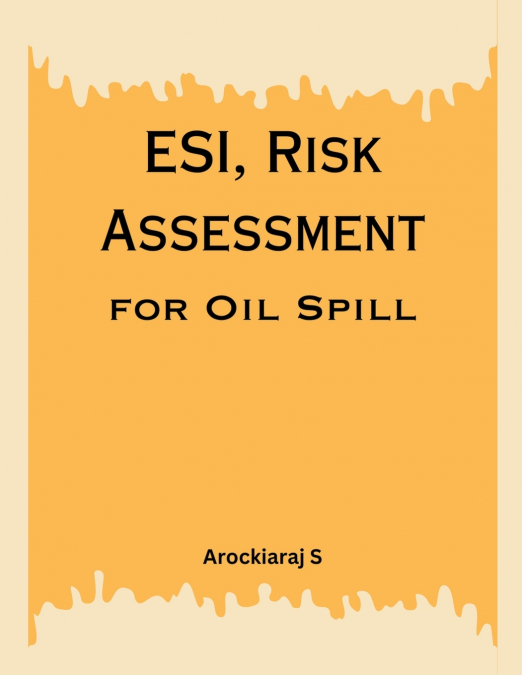
 Librería Desdémona
Librería Desdémona
 Librería Samer Atenea
Librería Samer Atenea
 Librería Aciertas (Toledo)
Librería Aciertas (Toledo)
 Kálamo Books
Kálamo Books
 Librería Perelló (Valencia)
Librería Perelló (Valencia)
 Librería Elías (Asturias)
Librería Elías (Asturias)
 Donde los libros
Donde los libros
 Librería Kolima (Madrid)
Librería Kolima (Madrid)
 Librería Proteo (Málaga)
Librería Proteo (Málaga)
Environmental Sensitivity Indexing (ESI) and risk assessment are two critical components in the preparation and management of oil spills along coastal regions. In the event of an oil spill, quick and efficient response is necessary to mitigate the adverse impacts on the environment and human health. Accurate assessment of the potential risks and damages caused by oil spills is essential for effective management of the spill. ESI is a tool used to assess the sensitivity of an area to oil spills, taking into account the local environmental conditions, biological resources, and socio-economic factors. The ESI can be used to identify high-risk areas, such as sensitive habitats, critical infrastructure, and popular recreational areas. This information can be used to develop contingency plans, prioritize response efforts, and allocate resources in the event of a spill. Risk assessment is the process of evaluating the potential hazards and impacts of an oil spill on the environment and human health. This process takes into account the characteristics of the oil, the environmental conditions, and the socio-economic factors in the affected area. Risk assessments help to identify potential sources of pollution, evaluate the effectiveness of response strategies, and develop long-term monitoring plans to assess the impacts of the spill. Integrated modeling, remote sensing, and Geographic Information Systems (GIS) are valuable tools for conducting ESI and risk assessments for oil spills. Integrated modeling combines data from multiple sources to simulate the behavior of oil spills under various environmental conditions. Remote sensing technology can be used to detect and monitor oil spills, and GIS can be used to map the potential impacts of spills on coastal environments. In Chennai, Tamil Nadu, India, ESI and risk assessment are crucial for managing the risk of oil spills along the coast. The region is home to several critical habitats, including mangroves, estuaries, and coral reefs, which are highly sensitive to oil pollution. The use of integrated modeling, remote sensing, and GIS can help to identify high-risk areas and develop effective response plans in the event of a spill. In conclusion, ESI and risk assessment are essential tools for managing the risk of oil spills along coastal regions. By identifying high-risk areas and evaluating potential impacts, ESI and risk assessment can help to mitigate the environmental and economic damages caused by oil spills. The use of integrated modeling, remote sensing, and GIS can improve the accuracy and effectiveness of ESI and risk assessment, enabling quick and efficient response in the event of a spill.